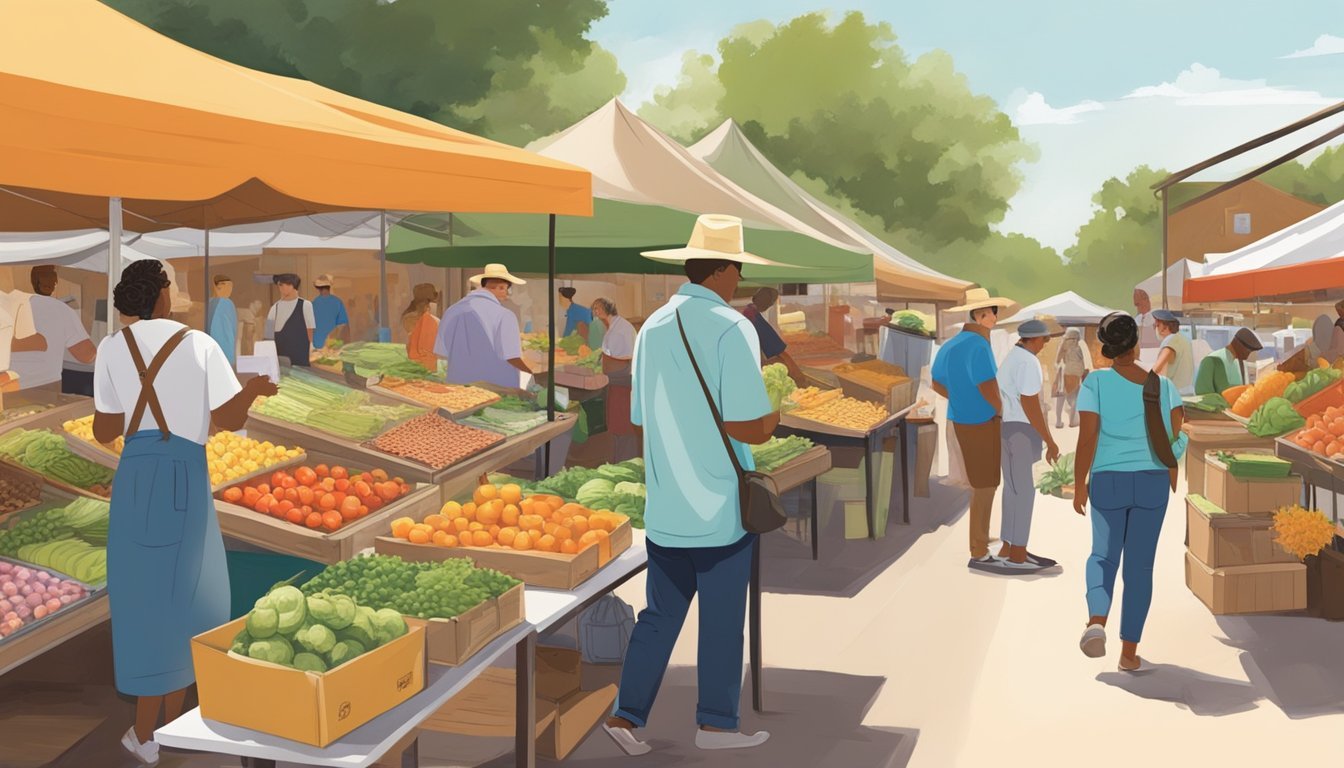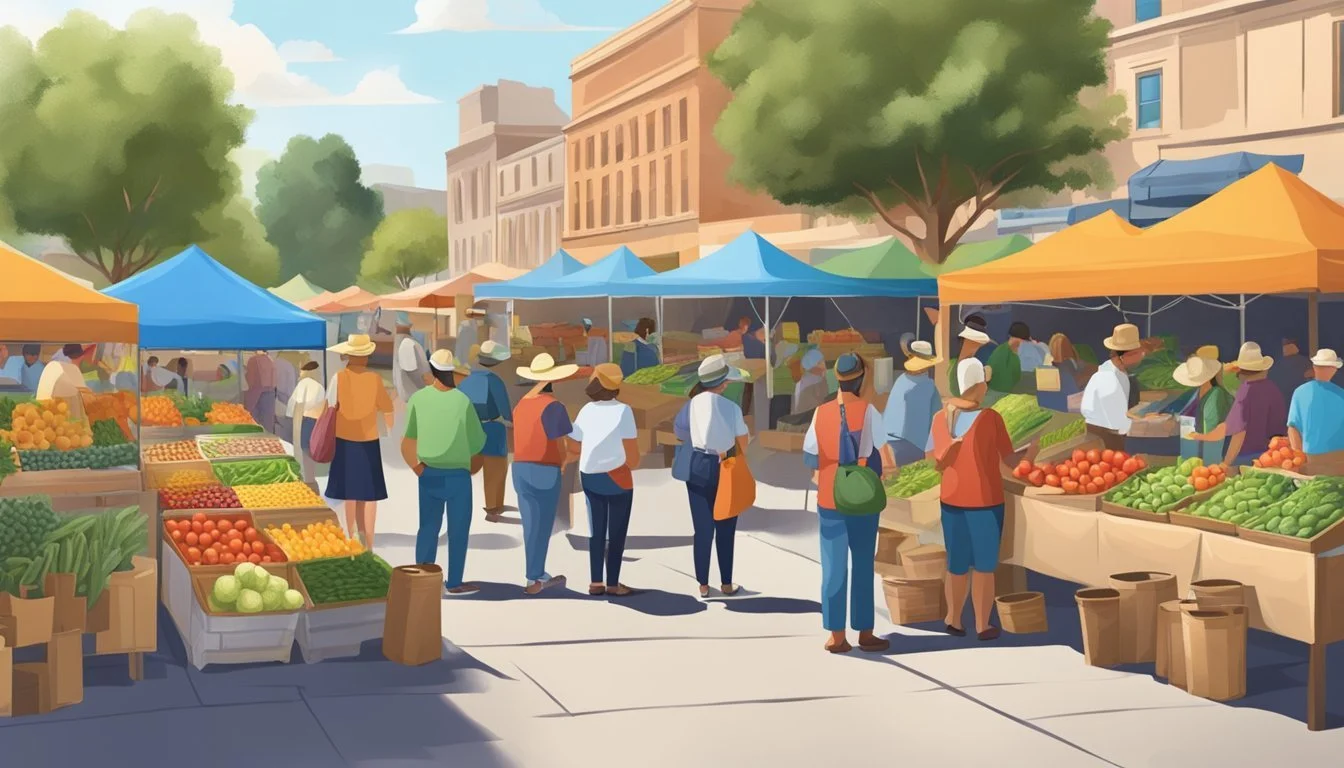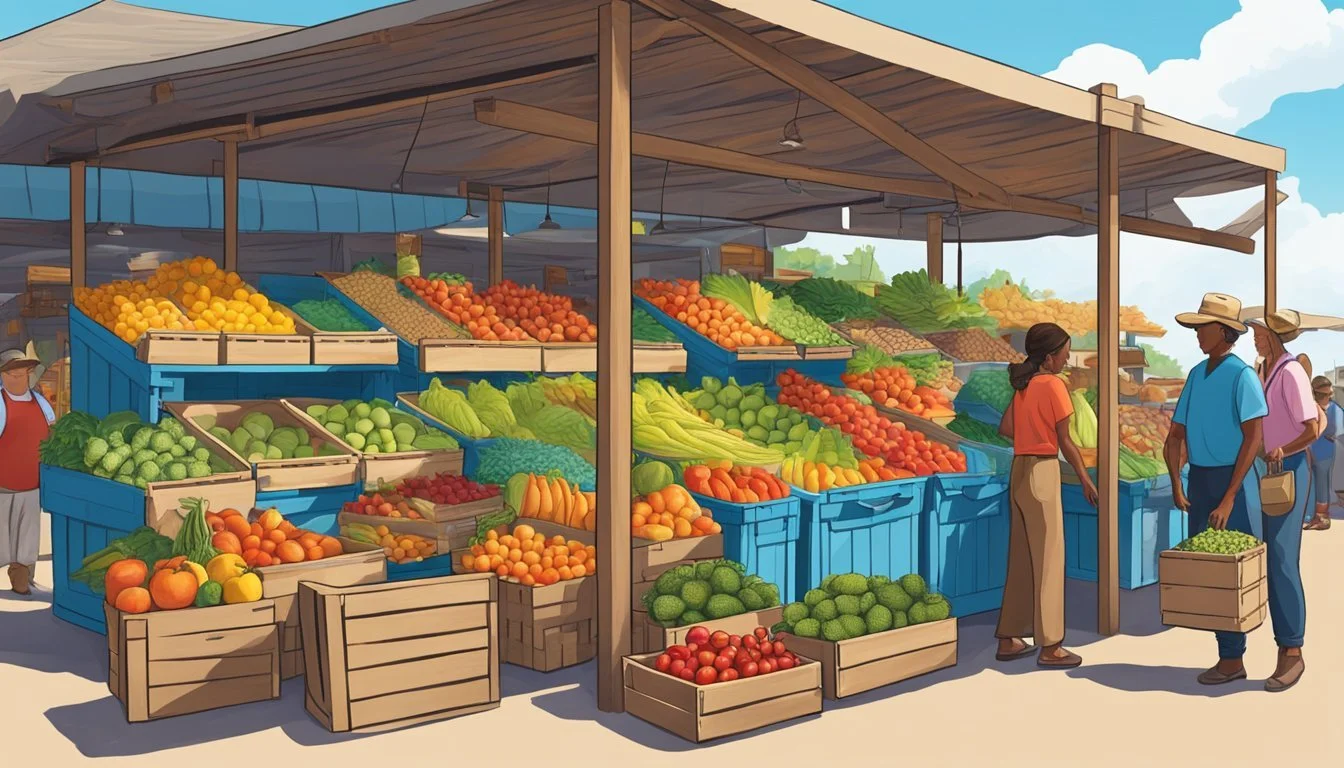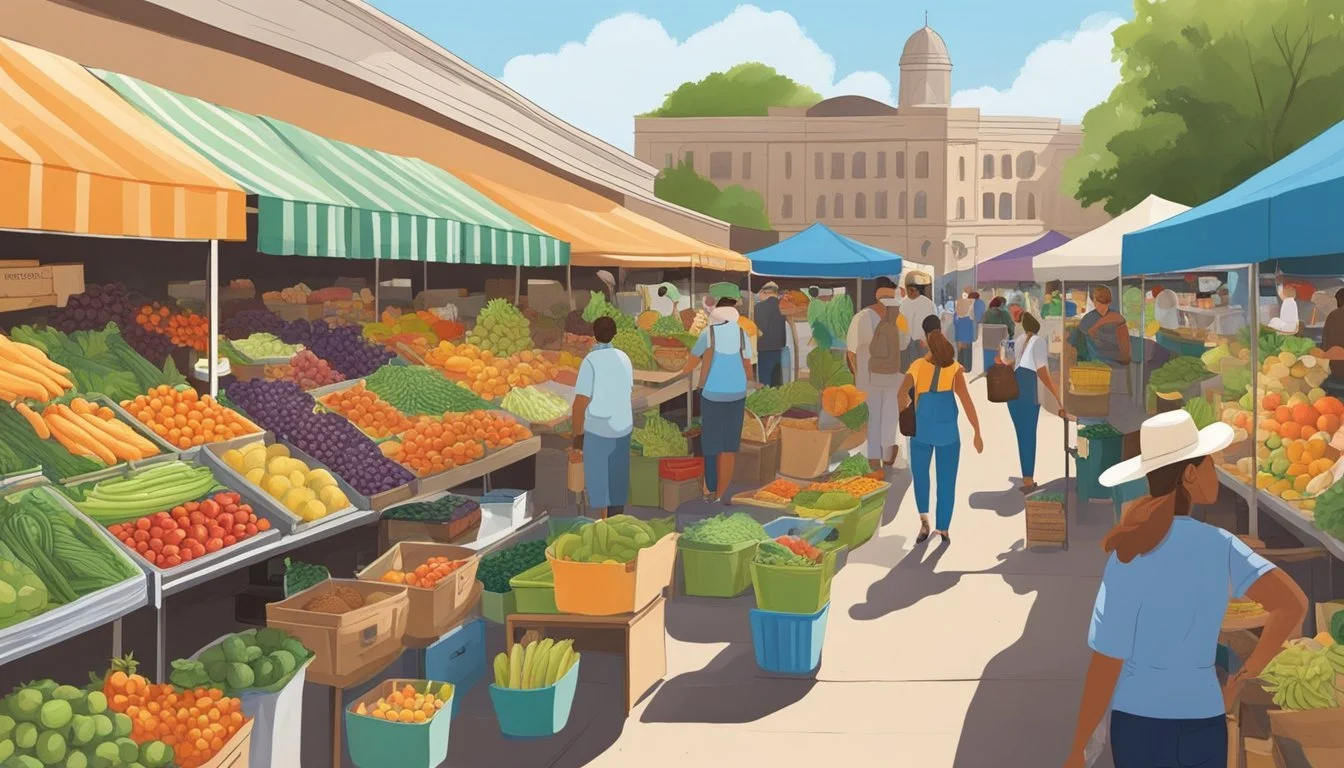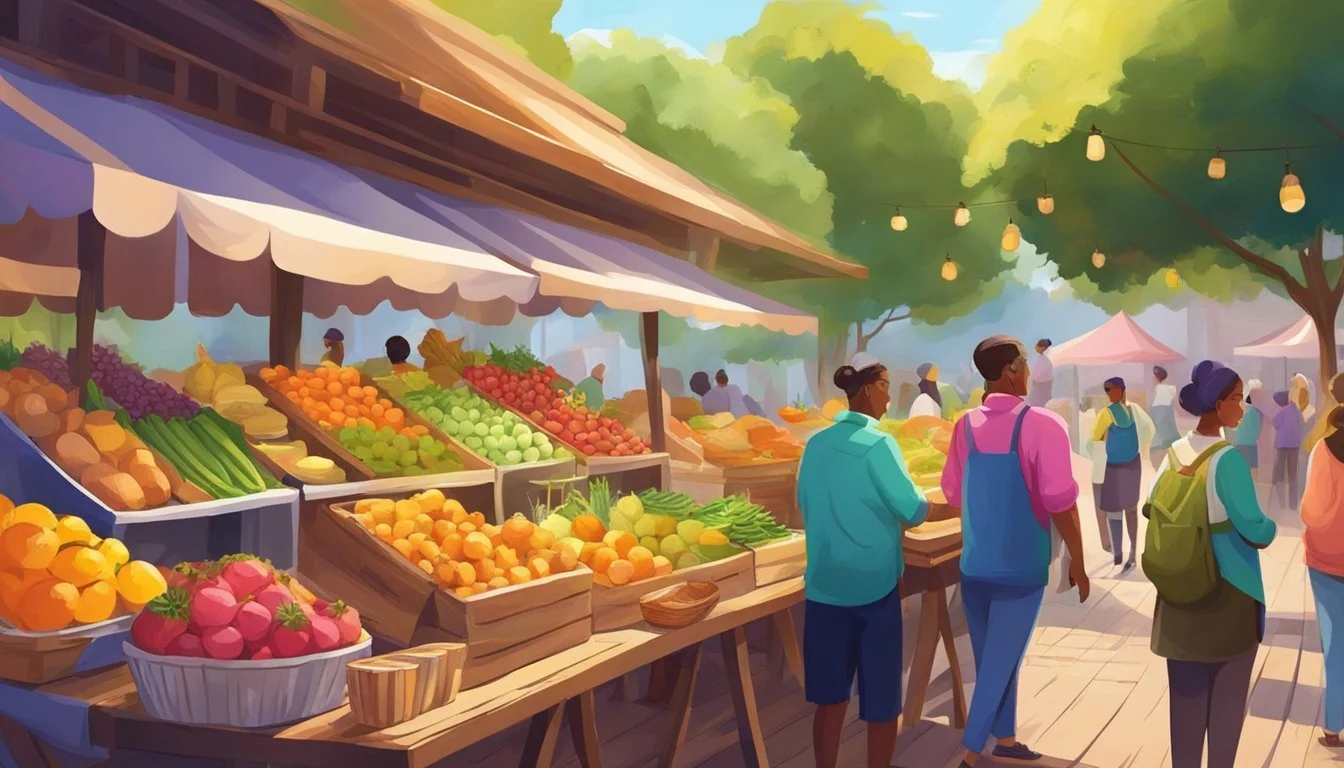How to Navigate a Texas Farmer's Market
Essential Tips for Shoppers
Navigating a Texas farmer's market is an engaging way to connect with local food producers and delve into the state's agricultural bounty. These markets provide a recurring venue where consumers can purchase fresh, locally-sourced produce directly from the farmers and artisans themselves. A typical Texas farmer's market features a majority of vendors who are genuine producers, selling items ranging from fruits and vegetables to handcrafted goods.
To effectively navigate these markets, consumers should be aware of some essential tips. Preparation is key; arriving with a clear idea of seasonal produce can enhance the shopping experience. Understanding the layout and offerings of specific markets enables shoppers to efficiently plan their visits. They should also be open to trying new foods, as Texas markets often boast a remarkable variety of unique local flavors and products.
With a little knowledge and planning, anyone can master the art of shopping at Texas farmer's markets. This not only aids in making healthier food choices but also supports the local economy by contributing to the sustainability of small-scale farmers and producers. The vibrant community atmosphere and the opportunity to learn directly from vendors about the food one consumes make these markets a valuable resource for anyone looking to enrich their culinary experiences.
Getting Started
Navigating a Texas farmers market effectively begins with a foundational understanding of what a farmers market is, its operational days, and an overview of the Texas markets landscape.
Understanding Farmers Markets
A farmers market is a physical retail marketplace intended to sell foods directly by farmers to consumers. They are known for offering locally sourced, fresh produce and other goods such as crafted products and baked goods. In Texas, these markets can range from seasonal outdoor setups in rural areas to year-round indoor markets in cities.
Importance of Market Days
Market days are significant for both consumers and vendors in the farmers market ecosystem. They dictate when fresh produce and other products are available. Most Texas farmers markets operate on specific days of the week, with Saturday being one of the most common market days without exception.
Common market days in Texas include:
Saturday: 8 a.m - 2 p.m
Sunday: 9 a.m - 1 p.m
Wednesday: 3 p.m - 7 p.m
Texas Market Overview
Texas showcases a diverse range of farmers markets, each offering unique experiences and products. They adhere to statewide rules and regulations, which include food safety practices, permits, and the types of produce and goods eligible for sale. These markets provide an opportunity for Texans to support local agriculture and enjoy fresh, regionally produced items.
Planning Your Visit
To make the most of a Texas Farmer's Market experience, proper planning ensures a fulfilling and efficient trip. The visitor should be aware of the best days for visits, the market's schedule, and essential items to carry.
Choosing the Right Day
One should consider that weekends, especially Saturday, are the most popular days to visit farmer's markets in Texas due to their bustling atmosphere and full vendor attendance. For a quieter shopping experience, one might opt for a weekday such as Wednesday when markets are less crowded.
Market Locations and Times
Researching market locations and their operational times is crucial. Most Texas farmers' markets have specific hours, with many operating from early morning to mid-afternoon. It is recommended to arrive early for the best product selection or later for potential discounts as vendors close their stalls.
What to Bring
Visitors should bring:
Credit cards: Many vendors now accept credit as a form of payment.
Small bills: Carrying small denominations of cash can speed up transactions.
Reusable shopping bags: For carrying purchases and reducing plastic usage.
A cooler or insulated bag: To keep perishable items fresh during transport.
Exploring the Market
Visiting a Texas Farmer's Market is an experience that allows individuals to immerse themselves in the local food culture, connecting directly with vendors and indulging in seasonal produce. As they navigate through the market, shoppers can enjoy the diversity of products, from fresh fruits to artisan meats.
Navigating Through Stalls
When entering a farmer's market, visitors should take a moment to scan the layout. Most markets are arranged with clear aisles, enabling easy passage between stalls. Here’s a straightforward approach:
Start at one end: Begin your exploration at either end of the market to avoid missing any vendors.
Look for signs: Stalls typically have signs indicating the farm's name and the type of products they offer—this is especially helpful for finding specific items like meat or eggs.
Seasonal Shopping Tips
Shopping seasonally ensures that produce such as fruits and vegetables are at their peak in flavor and nutritional content. To shop smart:
Refer to a seasonal chart: Use charts often provided by the market to know what’s in season.
Ask vendors: They can tell you what's currently the best pick from their offerings.
Here's a quick reference for seasonal produce:
Spring Summer Fall Winter Strawberries Tomatoes Apples Oranges Spinach Peaches Pears Grapefruits Peas Watermelon Grapes Sweet Potatoes
Engaging with Local Farmers
Interaction with local farmers deepens one's understanding of the community’s agricultural practices and the effort behind the produce. Here are some tips:
Ask questions: Inquire about farming methods or advice on preparing their products.
Build relationships: Regular visits can lead to knowing the farmers by name, which may lead to benefits like custom orders or learning about new products first-hand.
Shoppers often find that talking to the individuals who run the farms can provide insightful stories about the journey from farm to market stall.
Purchasing Produce
When visiting a Texas farmer's market, shoppers have the advantage of accessing a variety of fresh produce that supports local agriculture and contributes to health. Understanding how to select fresh, organic options and the seasonal availability of items like vegetables, seasonal fruits, dairy, and meats is crucial.
Selecting Fresh and Organic Produce
Shoppers should look for produce that appears vibrant and intact, avoiding items with blemishes or signs of spoilage. Organic produce is typically grown without synthetic pesticides and fertilizers, offering a natural option for consumers. While shopping for dairy products and meats, one should check for clear, cold storage conditions to ensure product integrity.
At the market, one can usually speak directly with the farmers, inquiring about their farming practices. This engagement not only instills confidence in the quality of the produce but also enhances the shopping experience by adding a personal connection with the people who grow the food.
Understanding Seasonal Availability
Texas offers a wide array of locally grown produce that changes with the seasons. Knowing what’s in season not only ensures peak freshness and flavor but can also be more cost-effective due to the abundance of the fruit or vegetable at that time.
Spring: Strawberries, Cherries
Summer: Peaches, Melons
Fall: Apples, Pears
Winter: Citrus, Dates
Seasonal Vegetables in Texas:
Spring: Asparagus, Spinach
Summer: Tomatoes, Green Beans
Fall: Squash, Pumpkins
Winter: Leafy Greens, Broccoli
Farmers market goers should note that while markets are often held on Sundays, availability of specific goods may vary. It's best to visit regularly to understand the patterns of seasonal offerings. A well-informed shopper can make the most of their experience by purchasing a variety of fresh, locally sourced goods.
Special Programs and Policies
Navigating the programs and policies at Texas farmer's markets ensures consumers can access fresh, locally sourced products while supporting sustainable practices. Financial assistance programs like SNAP and WIC can be utilized, and certification standards maintain the high quality and authenticity of the markets.
Financial Assistance Programs
Texas farmer's markets provide support for financial assistance programs such as SNAP (Supplemental Nutrition Assistance Program) and WIC (Women, Infants, and Children). These programs aim to make healthy, farm-fresh produce more accessible to those who need it.
SNAP Benefits: Several farmer's markets accept SNAP benefits, which allows consumers to purchase nutritious food directly from the farmers.
WIC Benefits: Markets often participate in the WIC Farmers' Market Nutrition Program (FMNP), providing additional support to families.
Certification Standards
Certified farmers markets in Texas adhere to specific standards to ensure that consumers are purchasing genuine, locally produced items. Maintaining these standards also promotes sustainable agriculture in the state.
Certified Sellers: Vendors at certified farmers markets must meet criteria proving they are actual local farmers or producers.
Market Integrity: Regular inspections and verifications are conducted to ensure ongoing compliance with the established certification standards.
Farmers Market Specialties
Texas Farmers Markets offer an abundance of specialized products that reflect the state's cultural and agricultural diversity. Shoppers can expect to find a wide range of handcrafted items and fresh, ready-to-consume foods.
Local Artisan Goods
Artisan goods at Texas farmers markets often include locally-produced honey and handcrafted items that are unique to the region. These markets, such as Mueller and Lakeline, are frequented by artisans who take pride in their work, offering everything from homemade soaps to one-of-a-kind jewelry pieces. When it comes to food, poultry is a common artisan good, with farmers offering freshly processed, free-range options that are a cut above conventional grocery store offerings.
Prepared Foods and Meals
For those seeking convenience without compromising on quality, many Texas farmers markets provide a selection of prepared foods and meals. Prepared foods range from gourmet sandwiches and wraps to salads and soups, all ready for immediate enjoyment. The Mueller Farmers Market is well-known for its ready-to-eat meals that offer a taste of the local cuisine, crafted with ingredients sourced directly from market vendors. Additionally, at markets like Lakeline, shoppers can indulge in freshly made pastries and bread, turning their market visit into a delightful culinary adventure.
Beyond the Booths
In addition to local produce and crafts, Texas farmers' markets often serve as vibrant community hubs, offering more than just shopping opportunities. They host a variety of community events and educational opportunities that enrich the experience for visitors.
Community Events
At Texas farmers' markets, the community comes together to enjoy events beyond the typical market fare. These can range from chef demonstrations to cooking classes, often showcasing local ingredients. Some markets even organize seasonal festivities and music performances, offering a chance for visitors to engage with local culture. Information about these events is frequently available at market information booths or can be found on the market's online platforms.
Chef Demos: Cooking presentations by local chefs.
Seasonal Festivals: Celebrations that include live music, crafts, and food.
Educational Opportunities
Farmers' markets in Texas are not just places to buy food; they also serve as centers for learning about food and agriculture. Markets might provide sessions on sustainable farming practices, or workshops about the nutritional benefits of farm-fresh foods. Such initiatives offer insight into the journey from farm to table and emphasize the importance of supporting local agriculture.
Sustainable Farming Workshops
Nutrition Education Sessions
Local food enthusiasts and patrons eager to learn more about their food sources can benefit greatly from these educational aspects of the markets.
Supporting Texas Agriculture
When shopping at a Texas farmer's market, consumers directly support the state's agricultural sector and its farmers, contributing to the resilience and sustainability of the local economy.
Contribution to Local Economy
Farmers in Texas play a crucial role in strengthening the local economy. By purchasing products at farmer's markets, consumers are ensuring more of their money goes directly to the producers. According to market research, only a fraction of the food dollar typically reaches the farmer, with the majority absorbed by various stages of distribution and marketing. In contrast, money spent at farmer's markets circulates within the community, supporting local farmers and encouraging the retention of wealth within the area.
Direct financial benefits to farmers:
Higher percentage of the consumer's food dollar
Swift payment, improving cash flow for farmers
Economic support:
Creation of local jobs on farms
Investment in land and agricultural products
Promoting Sustainable Practices
Shopping at Texas farmer's markets endorses sustainable practices. By focusing on locally sourced, farm-fresh produce, Texas farmers can concentrate on quality and environmentally-friendly methods rather than the demands of long-distance shipping and excessive packaging.
Sustainability factors:
Land use: Farmers often implement crop rotations and conservation methods.
Agricultural products: Reduced need for preservatives due to shorter travel distances.
The synergy between local farmers and consumers at farmer's markets creates opportunities for education about sustainable practices that can have lasting positive effects on Texas agriculture.
Staying Connected With Markets
Keeping up-to-date with Texas farmers' markets, especially in Central Texas, requires utilizing digital tools and subscribing to updates. These methods offer the most direct and immediate ways to stay informed about market schedules, new vendors, or any changes.
Social Media and Online Resources
Texas farmers' markets actively use social media platforms to share news and interact with their community. Platforms like Facebook, Twitter, and Instagram are hubs for real-time updates on market events and seasonal offerings. For individuals interested in Central Texas markets, following these social media pages can provide insights into local produce availability and exclusive market happenings.
Additionally, online resources such as the Interactive Texas Farmers Market Map found on TexasRealFood offer up-to-date geographical information about market locations throughout the state. They often include links to each market's website, where patrons can find further details.
Newsletter and Announcements
Many Texas farmers' markets also distribute newsletters via email. Interested visitors can typically sign up for these on the market's official website, ensuring they receive timely news straight to their inbox. Newsletters may contain:
Weekly or monthly market schedules
Announcements of special events
Highlights of featured vendors
To capture announcements, it is advisable for one to check if their preferred market in Central Texas offers an announcement subscription service. For instance, they may provide vital information about changes to operations or introductions of new product ranges at the market.
Exploring Regional Markets
Texas offers a vibrant array of regional farmers markets, each bringing its own local produce and community atmosphere to the forefront. Visitors can expect a diverse selection of goods and a chance to directly engage with local farmers and artisans.
Notable Texas Markets
Fredericksburg Farmers Market: A must-visit destination, Fredericksburg is known for its rich history and local fare. The market showcases a variety of local produce and handcrafted goods, making it a hub for fresh, locally-sourced items.
Barton Creek Farmers Market in Austin exemplifies a bustling market experience with a wide array of organic options from area farmers. It's a place where the community gathers not just for shopping but also for enjoying the eclectic vibe of the city.
In Waco, the scene by the river near Washington Ave comes alive with the Waco Farmers Market, offering fresh produce and unique finds with a picturesque backdrop. The market not only serves as a shopping destination but also as a social gathering spot for residents and visitors alike.
Market Hopping Itinerary
Star Farmers Market: Start the week with a Tuesday visit to this thriving market. Here, one can find the freshest local produce and artisanal products that reflect the character of the surrounding area.
Continuing the journey, check the map for the Thursday markets, which will often include seasonal offerings and specialty items that are worth the scheduled trip. The itineraries for visiting these markets should maximize the variety of goods one experiences, from the seasonal abundance at Fredericksburg to the organic treasures at Austin's Barton Creek.
By following this guide, market-goers can indulge in the freshness of local produce and enjoy the unique cultures of different Texas markets. Remember to check market times as they vary throughout the state to plan your visits accordingly.
Final Words
Navigating a Texas farmer's market can be a rewarding experience that supports local farmers and brings fresh, nutritious produce directly to consumers. Below are key takeaways to ensure visitors make the most of their market visits:
Preparation: Before stepping out, visitors should equip themselves with a list of seasonal produce they intend to purchase. This helps streamline shopping and ensures a focus on quality and seasonal availability.
Understanding Regulations: Texas farmer's markets operate under specific statewide rules and regulations. Patrons benefit from familiarizing themselves with these to comprehend what can be expected in terms of food safety, available products, and vendor qualifications.
Purchasing Tips: Consumers are encouraged to:
Engage with vendors and ask questions about their products.
Bring reusable bags to reduce plastic waste.
Carry cash, as not all vendors may accept card payments.
Community Support: Shopping at farmer's markets serves as direct support for local agriculture and contributes to the sustainability of food systems. It fosters a connection between consumers and the source of their food.
Farmers markets offer a glimpse into Texas's diverse agricultural landscape and provide an avenue for healthy living. They are not just places to buy food; they are also vibrant community hubs that celebrate local culture and cuisine. Visitors leave not only with bags full of fresh produce but also with the satisfaction of contributing to their local economy and fostering community spirit.


